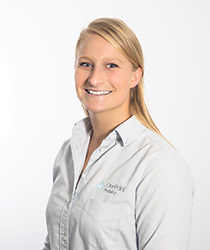 Rheumatoid arthritis, or RA, is a chronic progressive disease causing inflammation in the joints which results in painful deformity and immobility, especially in the fingers, wrists, feet and ankles.
Rheumatoid arthritis, or RA, is a chronic progressive disease causing inflammation in the joints which results in painful deformity and immobility, especially in the fingers, wrists, feet and ankles.
Some patients can live with RA for a long time without any complications, whereas others aren’t as lucky.
As a podiatrist, we see a lot of patients with the disease when it starts to affect the joints in the foot.
Patients will develop what we call ‘Rheumatoid nodules’, which is when firm lumps occur under the forefoot because of inflammation in these joints.
The nodules under the foot can become very prominent, and this is where the problem occurs.
The toes will also change position – sometimes they can become clawed, and sometimes they can start to drift in a different direction.
So how can a podiatrist help?
Footwear
Footwear is a major factor with our RA patients. As the foot changes shape, the patient needs to change their footwear to accommodate these changes. Deformities which can occur include bunions, and retracting digits, so the depth and the width of the shoe are very important.
Another important footwear feature is the material. Neoprene and stretched leather are stretchy materials, which conform to the foot, decrease pressure and are much more comfortable. The Footwear Store is a great place to start when searching for Medical Grade Footwear with these features, which is located inside OnePointHealth.
Custom Orthoses
Custom Orthoses are important with RA patients, as they can offload the areas of high pressure.
Often, we see patients with large rheumatoid nodules which have ulcerated as a result of increased pressure. Without offloading these areas, the ulcerations can be hard to treat, or they are likely to reoccur.
Custom orthoses are designed around each individual foot, to help make each lump and bump feel comfortable.
Debridement
As the foot changes shape, areas of pressure will change. And as pressure increases, sometimes callus and corns can form. As noted above, pressure will be on the nodules, but pressure can also develop on the top of the toes. If the toes change into a clawed position, it is very common to start getting corns and callus on the joints of these digits.
Regular debridement of the callus and corns is important to ensure the areas do not ulcerate, but it is also important for comfort. Increased callus under the foot, and corns can be very painful, and it is an easy thing to reduce or remove in clinic.
Lauren Bragg
Lauren Bragg is a Podiatrist at OnePointHealth in Penrith
